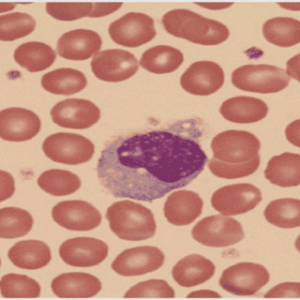(Downloads - 0)
For more info about our services contact : help@bestpfe.com
Table of contents
1 Introduction
1.1 Version francaise de l’introduction
1.1.1 Les proprietes statistiques des genomes
1.1.1.1 La premiere regle de parite de Charga
1.1.1.2 Modeliser les sequences d’ADN
Sequences aleatoires
Modeles de Markov
Chaines de Markov heterogenes
Modeliser l’evolution des sequences d’ADN
1.1.1.3 La seconde regle de parite de Charga
1.1.1.4 Distribution des Longueurs d’Appariement
1.1.2 Des processus d’evolution plus complexes
1.1.2.1 Les elements transposables
1.1.2.2 Les repetions possedant un petit nombre de copies
Les duplications de gene
Les duplications segmentaires
Retroduplications
Les duplications de genome entier
1.1.3 Plan de la These
1.2 English Version of the Introduction
1.2.1 Statistical Properties of Genomes
1.2.1.1 Charga’s First Parity Rule
1.2.1.2 Modelling DNA Sequences
Random sequences
Markov Models
Heterogenous Markov Chains
Modeling the Evolution of Sequences
1.2.1.3 Charga’s Second Parity Rule
1.2.1.4 Match Length Distributions
1.2.2 Complex Processes of Genome Evolution
1.2.2.1 Transposable Elements
1.2.2.2 Low Copy Number Repeats
Gene Duplication
Segmental Duplications
Retroduplications
Whole Genome Duplication
1.2.3 Thesis Outline
2 Materials and Methods
2.1 Computing MLDs
2.2 Power-Law Distributions
General Properties
Representing Power-Laws
Logarithmic Binning
2.3 Yule Trees
2.4 Simulating the Evolution of DNA Sequences
2.5 Bioinformatic Procedures
Genomes
Phylogenetic Tree of Pseudogenes
RepeatMasker
3 Self-alignment
3.1 Preliminary Considerations
3.1.1 The Match Length Distribution of the Self-Alignment of a Genome
3.1.2 The Stick Breaking Process on Evolutionary Time Scale .
3.1.3 A Mathematical Framework to Calculate Match Length Distributions
3.2 The Simplest Case: Random Duplications
3.2.1 Theoretical Calculations
The Stationary State with Continuous Duplications .
3.2.2 Simulations
Mutations
Duplications
Results
3.2.3 Discussion
3.2.4 Limitations of the Simple Model
3.3 Yule Trees
3.3.1 Theoretical Calculation
3.3.2 Simulations
3.3.3 Discussion
3.4 The Case of Retroduplication
3.4.1 Theoretical Calculations
3.4.2 Simulations
3.4.3 Discussion
3.5 Biological Insights from our Models
3.5.1 Using the MLD to Infer Information on Dierent Duplication
Mechanisms
3.5.2 Assessing the Quality of the Assembly: Orangutan Example
3.5.3 Assessing the Quality of the RepeatMasking:
Example from the Macaque Genome
3.5.4 Conclusion
4 Comparative Alignment
4.1 MLDs of Comparative Alignments
4.2 Pseudogene Hypothesis
4.3 Ladder of Trees
4.4 The Evolution of Conserved Regions
4.4.1 Theoretical Calculations
Comparing Species Shortly after the Split
The comparison of Distantly Related Species
Calculating N( ), the Number of Regions at a Distance
from each others
4.4.2 Simulations
4.4.3 Discussion
The Distribution of Mutation Rates
The case of Paralogs
Power-laws in MLDs of other Comparisons
5 At the Crossing Between Self and Comparative Alignments: The Case of Whole Genome Duplication
5.1 The Fate of a Genome after a Whole Genome Duplication
5.2 The Transition Between the Two Regimes
5.2.1 Simulations
5.3 Discussion and Limitations
6 Comparison of Coding Sequences
6.1 Comparing the Exome of Dierent Species
6.2 Theoretical Application of the Divergence Model
6.3 Theoretical Calculation of the Value of N( )
Symmetrical Mutation Rate Distributions
Asymmetrical Mutation Rates Distribution
6.4 Investigating Dierent Exon Subclasses
6.5 Conclusions
Hypotheses Regarding N( )
Hypotheses Regarding m(r; )
Hypotheses Regarding the Exon Length Distribution
7 Conclusion
7.1 Summary
7.2 Perspectives
A Extension to the Discrete Case
B Non RepeatMasked MLD
C Article: Statistical Properties of Pairwise Distances between Leaves on a Random Yule Tree
Bibliography


